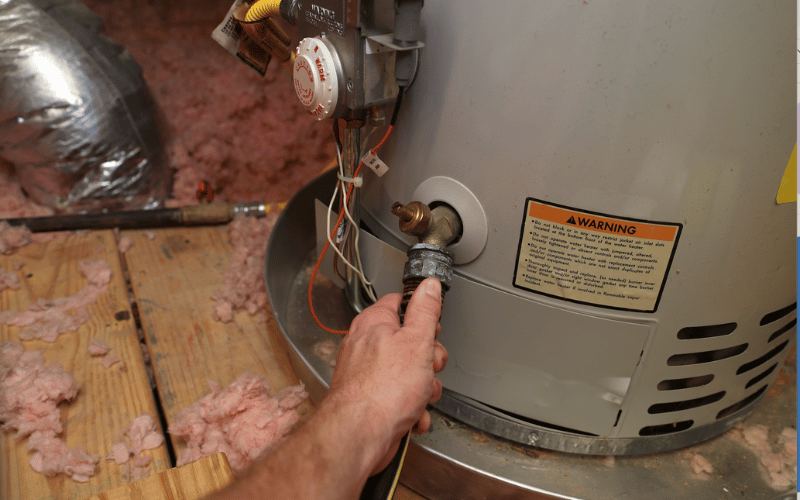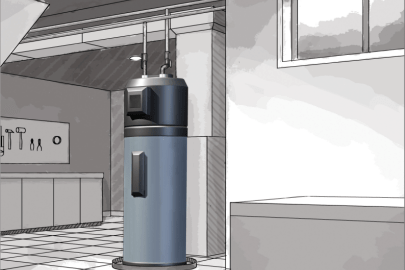The author is making a few good points on the subject of How to Maintain a Hot Water Heater in a Few Simple Steps overall in the content down the page.

Warm water is necessary for everyday comfort, whether it's for a revitalizing shower or washing recipes. To ensure your hot water system runs successfully and lasts longer, normal upkeep is vital. This post offers useful tips and understandings on just how to preserve your home's hot water system to stay clear of disturbances and expensive repair work.
Introduction
Keeping your home's warm water system might seem overwhelming, however with a few simple actions, you can ensure it operates efficiently for many years to come. This overview covers whatever from understanding your warm water system to do it yourself maintenance pointers and understanding when to contact professional aid.
Significance of Maintaining Your Warm Water System
Regular maintenance not only expands the lifespan of your warm water system however also guarantees it operates successfully. Neglecting upkeep can bring about decreased effectiveness, greater energy expenses, and also premature failure of the system.
Indicators Your Hot Water System Requirements Upkeep
Knowing when your warm water system requires attention can avoid major problems. Keep an eye out for signs such as irregular water temperature level, strange noises from the heating system, or rusty water.
Flushing the Hot Water Heater
Purging your water heater eliminates debris build-up, improving effectiveness and extending its life.
Monitoring and Replacing Anode Rods
Anode rods stop deterioration inside the container. Inspecting and replacing them when worn is critical.
Complex Problems Needing Specialist Aid
Examples include major leaks, electric troubles, or if your hot water heater is consistently underperforming.
Routine Professional Maintenance Perks
Specialist upkeep can consist of thorough inspections, tune-ups, and guaranteeing compliance with security requirements.
Evaluating and Readjusting Temperature Level Setups
Readjusting the temperature settings ensures optimal performance and safety and security.
DIY Tips for Maintenance
You can carry out numerous upkeep jobs yourself to keep your hot water system in leading problem.
Looking for Leaks
Routinely inspect pipes and connections for leakages, as these can bring about water damages and greater bills.
Understanding Your Hot Water System
Before diving into upkeep jobs, it's practical to recognize the basic components of your hot water system. Generally, this includes the hot water heater itself, pipelines, anode poles, and temperature level controls.
Month-to-month Upkeep Tasks
Routine regular monthly checks can assist catch small concerns prior to they intensify.
Evaluating Pressure Alleviation Valves
Examining the stress relief valve ensures it operates appropriately and stops extreme pressure build-up.
Shielding Pipes
Shielding warm water pipes reduces warmth loss and can conserve energy.
When to Call an Expert
While DIY upkeep is helpful, some problems require specialist know-how.
Conclusion
Normal upkeep of your home's hot water system is essential for performance, longevity, and price savings. By following these pointers and understanding when to seek specialist assistance, you can ensure a trustworthy supply of warm water without unanticipated interruptions.
Water Heater Maintenance: The Basics
Maintaining your water heater will ensure it operates efficiently and has a longer lifespan. Neglecting regular maintenance can lead to costly repairs and an even bigger chunk of your savings if you have to replace it sooner than necessary. But there’s good news: Most water heater maintenance tasks are relatively simple and easy for homeowners with basic DIY skills.
Flush the Water Heater
Over time, sediment and minerals can build up in the tank, reducing its efficiency and potentially causing damage. To flush the tank, turn off the power or gas supply, attach a hose to the drain valve near the bottom and open the valve to drain the water until it runs clear. Ideally, flush the tank annually.
Replace the Anode Rod
The anode rod is a sacrificial metal rod that helps prevent corrosion inside the tank. Inspect and replace it every three to five years or per the manufacturer's recommendation. To replace the anode rod, turn off the power or gas supply, drain a few gallons of water from the tank, unscrew the old rod and replace it with a new one. If the anode rod is significantly corroded or covered in calcium buildup, it's a sign the water heater may need to be replaced soon.
Tune-Up
A yearly tune-up can help identify potential issues and ensure your water heater operates at peak efficiency. This typically involves checking the thermostat, burner assembly (for gas heaters) and any other components specified by the manufacturer. During a tune-up, the technician may also clean the burner and adjust the pilot light (for gas heaters) or examine the heating elements (for electric heaters).
How to Maintain Your Water Heater
Insulate the tank. Insulating the tank can improve energy efficiency and reduce heat loss, saving you money on energy bills. You can purchase precut insulation blankets designed specifically for water heaters or use standard fiberglass insulation wrapped securely around the tank. Check the temperature. The recommended water temperature for most households is around 120 degrees Fahrenheit (49 degrees Celsius). Higher temperatures can increase energy costs and potentially cause scalding. Use a kitchen thermometer to check the temperature at the faucet nearest the water heater. Monitor water pressure. Excessive water pressure can strain the water heater and cause leaks or even tank failure. Install a pressure-reducing valve if necessary. The ideal water pressure range is between 60 and 70 PSI (pounds per square inch). Test the temperature and pressure (T&P) relief valve. The T&P relief valve is a safety feature that releases pressure if the tank gets too hot or the pressure builds up too high. Test it annually by lifting the lever and allowing a small amount of water to release. Replace the valve if it doesn't release water or reseal properly. Check for leaks. Regularly inspect the tank, pipes and fittings for leaks or corrosion. Deal with issues promptly to prevent further damage. Even a small leak can lead to significant water damage over time. Consider a tankless water heater. If your traditional tank-style water heater is nearing the end of its lifespan ( typically 10 years), consider replacing it with a tankless water heater. These units heat water on demand, reducing standby energy losses and potentially saving you money on your energy bills. Schedule professional maintenance. While homeowners can perform many water heater maintenance tasks, it's still a good idea to schedule professional maintenance every few years. A plumber or HVAC technician can thoroughly inspect the unit, identify potential issues and ensure it operates safely and efficiently. https://www.homeserve.com/en-us/blog/home-improvement/hot-water-heater-maintanence/

We hope you liked our article about What Kind of Maintenance Do Water Heaters Need?. Thanks for taking the time to read through our article post. Liked our article? Please quickly share it. Help someone else discover it. We appreciate reading our article about Tips For Maintaining Your Hot Water Heater.
Get Quote Now